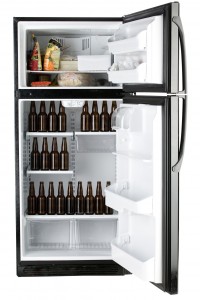 When I was 12 or 13, back in the mid-1970s, the dog-day afternoons this time of summer would really start dragging. Figuring it was way too hot and humid to run around outside, a couple neighborhood buddies and I would first watch TV. But reruns of “Gilligan’s Island,” on the only channel not showing soap operas, could hold us for just so long.
When I was 12 or 13, back in the mid-1970s, the dog-day afternoons this time of summer would really start dragging. Figuring it was way too hot and humid to run around outside, a couple neighborhood buddies and I would first watch TV. But reruns of “Gilligan’s Island,” on the only channel not showing soap operas, could hold us for just so long.
To stave off boredom, I’m embarrassed to say, we’d occasionally resort to annoying strangers by making prank phone calls when no one else was home. (This was before caller ID.) We’d randomly dial a number. When someone answered, despite our giggling and cracking pubescent voices, we’d pretend to be an on-the-air radio or TV announcer giving them a chance to win big bucks on shows like “Dialing for Dollars.”
Another call we’d make was the old “taking-a-survey-for-the-electric-company” bit. We’d ask unsuspecting folks if their refrigerator was running. And when the usual response was “yes,” we’d blurt out, “Well, you better go catch it! … har, har!” … and hang up.
Oh, man … that was big-time entertainment.
Well, fast forward 35 years. I’m writing today, representing your electric company. We’d like to know: Is your refrigerator running?
But wait … I’m not asking about the one in your kitchen. I’m wondering about the extra one (or two, or maybe more) in your basement or garage or smoke house. It’s the one you bought 20, 25 years ago … or that avocado one from the early 1970s. It’s the one you replaced in the kitchen when you bought that new ENERGY STAR-qualified unit a couple of years ago. Replacing it: That was good thinking.
But then you decided you couldn’t sell the old unit for much, so you kept it. You plugged it in somewhere thinking it might come in handy. Now it sits there with maybe a jug of ice in the freezer, a half case of beer, and some two-liters of ginger ale left over from New Year’s Eve. Maybe there’s a container of nightcrawlers, too. You paid $3.95 for those two dozen worms a month ago (when they were still “live bait”) and had a bunch left. Not to be wasteful, you saved them for “next time” in the old fridge.
The trouble is: That old fridge is wasteful. It’s incredibly inefficient compared to your new one. If it’s in the garage or an unconditioned area, right now it’s even a bigger energy hog, especially if it’s keeping only beer and bait cold.
 Everyone is concerned about the environment. Washington is passing bills that will raise electric rates and electric bills by possibly billions of dollars. We keep using more electricity and are running out. Building any kind of new generation is going to be costly.
Everyone is concerned about the environment. Washington is passing bills that will raise electric rates and electric bills by possibly billions of dollars. We keep using more electricity and are running out. Building any kind of new generation is going to be costly.
“Think globally, act locally” has always been the mantra of conservationists. To protect the global environment, let’s start as local as we can get — at our own homes. If everyone started there and looked at our own energy use, and we start doing all we can to cut out the waste, we’d make a big dent in energy consumption. A second or third refrigerator that is barely used is one way to start. It may seem like a drop in the bucket, but an old refrigerator still requires electricity. And producing electricity creates greenhouse gases.
I’m not talking about secondary fridges or freezers that are packed with a frozen side of beef or venison or are needed for large families. I’m talking about the aforementioned, barely-used beer and bait fridges. Is the convenience of having a cold brewskie on hand out in the garage worth the price you pay for it month after month?
Removing a second fridge can save you about 500 kilowatt-hours per year. At 9 cents per kwh, that’s $45 a year. Some old, very inefficient fridges can use 500 kwh each month!
A survey by Wabash Valley Power Association, one of Indiana’s power supply co-ops, reveals that one of every five consumers has a second fridge inside the home. Over 40 percent of those units are 10-plus years old. Its survey also noted that over a quarter of its consumers have a second fridge in an out building. Over 39 percent of those units are 10-plus years old.
That’s a lot of electricity that could be conserved by unplugging those refrigerators, or upgrading them to new, more efficient ones. New ones will pay for themselves in several years with the energy savings. ENERGY STAR suggests that if you still have a fridge from the 1980s, replacing it with an ENERGY STAR-qualified model will save over $100 each year on the electric bill. Replace a fridge from the 1970s and save nearly $200 each year!
So, let me rephrase my original question: Is your old beer and bait refrigerator running?
If so, you better go catch it … and your electric meter … and your pocketbook. They’re all spinning down the street, one after another. And that pavement, we’re told, is only going to keep getting hotter, especially this time of year.
Use the ENERGY STAR Savings Calculator to find out exactly how much money you’ll save by replacing your existing refrigerator.



